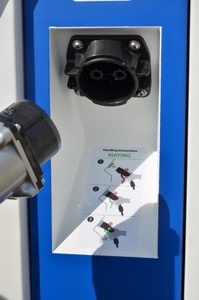Clean fuels for transport: Member States now obliged to ensure minimum coverage of refuelling points for EU-wide mobility
New EU rules have been adopted today to ensure the build-up of alternative refuelling points across Europe with common standards for their design and use, including a common plug for recharging electric vehicles.
Member States must set and make public their targets and present their national policy frameworks by end-2016.
"Alternative fuels are key to improving the security of energy supply, reducing the impact of transport on the environment and boosting EU competitiveness", said Commission Vice-President Siim Kallas, commissioner for transport. "With these new rules, the EU provides long-awaited legal certainty for companies to start investing, and the possibility for economies of scale. EU Member States requested flexibility in deploying the infrastructure. It is now up to them to develop the right national policy frameworks.
Up to now, clean fuels have been held back by three main barriers: the high cost of vehicles, a low level of consumer acceptance, and the lack of recharging and refuelling stations. This is a vicious circle. With the new "directive for the deployment of the alternative fuels infrastructure", Member States will have to provide a minimum infrastructure for alternative fuels such as electricity, hydrogen and natural gas, as well as common EU-wide standards for equipment needed and user information. Access to liquefied natural gas (LNG) for inland barges and maritime ships will provide a realistic option to meet challenges on lower emissions, in particular stricter sulphur emission limits in sensitive areas.
The directive sets a regulatory framework for the following fuels:
Electricity: The directive requires Member States to set targets for recharging points accessible to the public, to be built by 2020, to ensure that electric vehicles can circulate at least in urban and suburban agglomerations. Targets should ideally foresee a minimum of one recharging point per ten electric vehicles. Moreover, the directive makes it mandatory to use a common plug all across the EU, which will allow EU-wide mobility.
Liquefied Natural Gas (LNG): Natural gas/bio-methane vehicles offer today a well-developed technology, with performances and cost equivalent to petrol or diesel units and with clean exhaust emissions. Natural gas use in trucks and ships can substitute diesel. For the development of LNG for road transport, Member States have to ensure a sufficient number of publicly accessible refuelling points, with common standards, on the TEN-T core network (see IP/13/948), ideally every 400 km, to be built by end-2025. The directive also requires a minimum coverage to ensure accessibility of LNG in main maritime and inland ports.
Compressed Natural Gas (CNG): The directive requires Member States to ensure a sufficient number of publicly accessible refuelling points, with common standards, to allow the circulation of CNG vehicles, both in urban and sub-urban areas as well as on the TEN-T core network, ideally every 150 km, to be built by end-2025.
Hydrogen: The directive aims at ensuring a sufficient number of publicly accessible refuelling points, with common standards, in the Member States who opt for hydrogen infrastructure, to be built by end-2025.
In addition, the directive requires that clear information is given to consumers about the fuels that can be used by a vehicle, using standardised labelling in vehicle manuals, at dealerships and on the recharging and refuelling points. It also aims at providing clear information to users to compare alternative fuel prices with conventional fuel prices. Moreover, Member States must ensure that information about the geographical location of publicly accessible recharging and refuelling points is made available in an open and non-discriminatory manner.
Quelle: EUROPEAN COMMISSION
Artikel Online geschaltet von: / Doris Holler /
